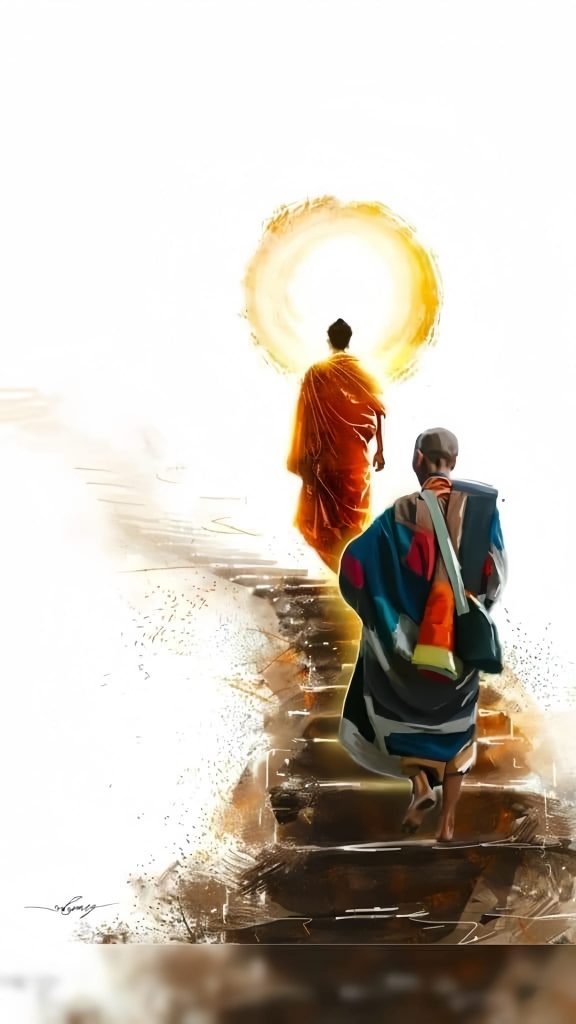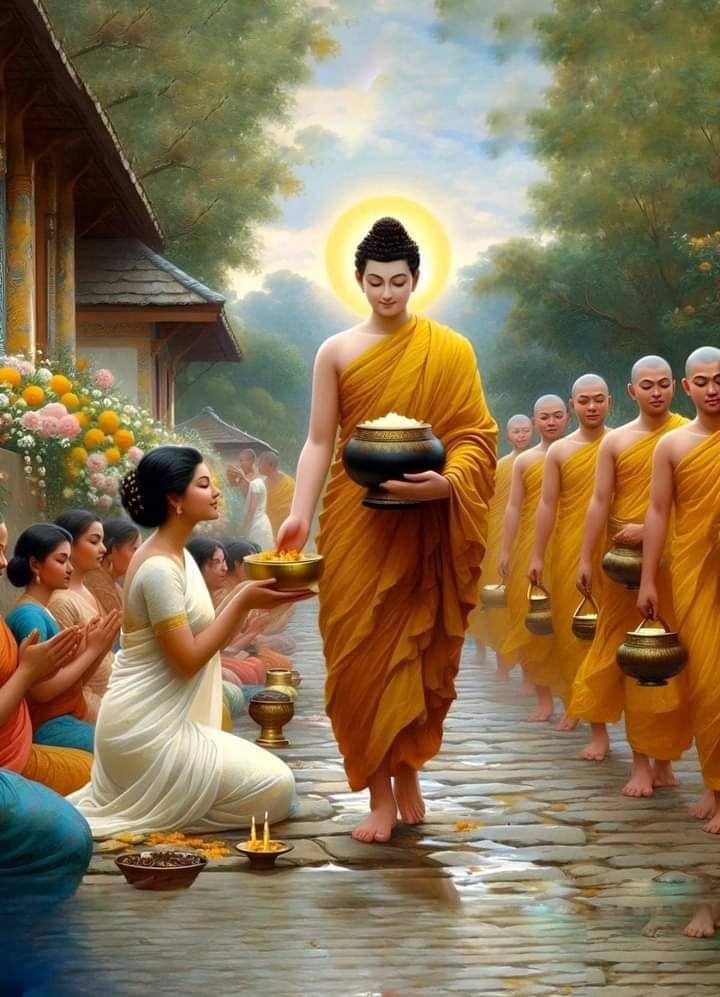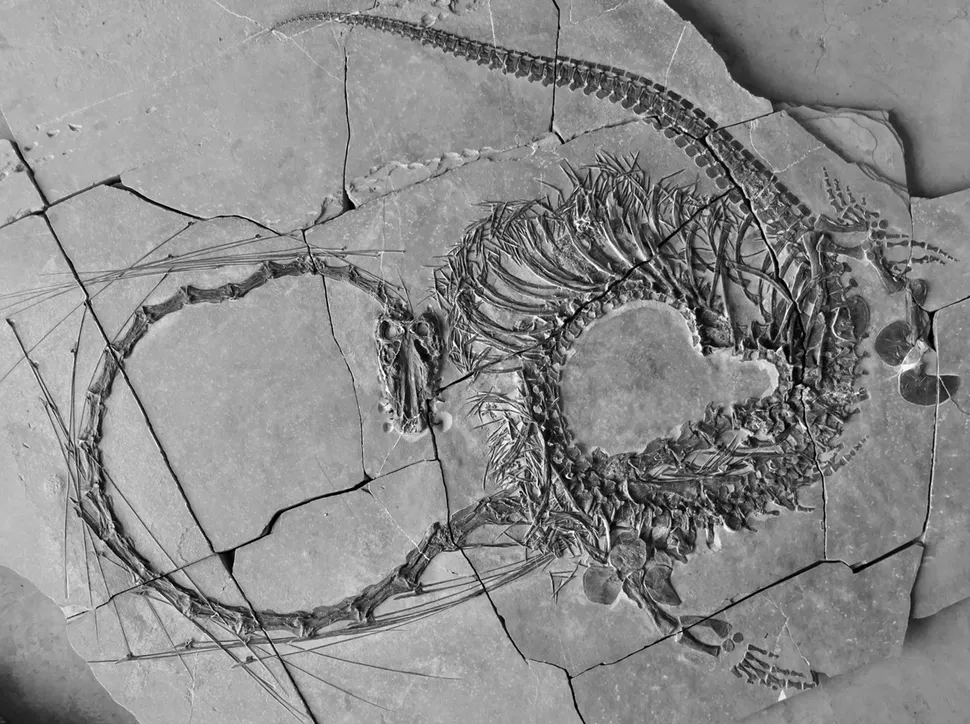Today, I will tell you about a Buddhist monk, about a strange journey from being unknown to being surrounded by crowds and many people deciding to give up everything to follow him.
This is a story happening in Vietnam, and the monk I want to refer to has the Dharma name “Minh Tue.”
Who is Monk “Minh Tue”?
Before becoming widely known as he is today, Monk Minh Tue was once encountered by a YouTuber in a cave at San Mountain (Nha Trang). In the video, the monk did not preach but simply answered and shared, in a very sincere manner, about his journey of spiritual practice when asked.
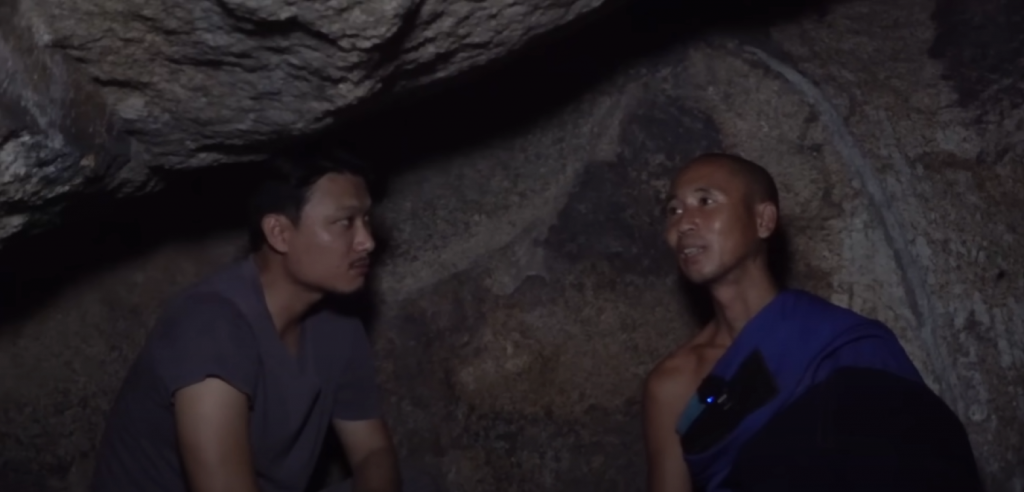
Until today, Monk Minh Tue is widely known and has widespread influence, even beyond national borders. The story of Monk Minh Tue has become hotter than ever, with social media flooded with videos and images of him. Consequently, there are many different opinions and perspectives. Some people admire and respect him, while some criticize and disparage him.
Some look at his actions and clothes and mock him, calling him crazy, self-torturing, lacking wisdom, not following the Middle Way that the Buddha encouraged. But Monk Minh Tue is practicing according to the original teachings of Buddhism. He practices the Dhutanga practices.
What is the Dhutanga practices?
These practices include 13 practices, called the 13 Dhutanga practices (Dhutanga-niddesa):

1. Wearing rag robes: These are robes made from pieces of discarded, torn fabric collected from cemeteries, garbage dumps, roadsides, or forests, which are then washed and sewn into robes to wear.
2. Wearing only three robes: Monks only wear three robes and use them until they are torn before making new ones.
3. Living by alms: In this practice, monks carry a bowl to beg for food to sustain themselves.
4. Begging from house to house: not choosing wealthy patrons and ignoring poor families, not going to places with lots of delicious food but begging in sequence.
5. Eating only one meal a day: Once the monk stands up after eating, they do not eat anymore, even if someone offers more food.
6. Eating with one bowl: Only using one bowl to eat, not using multiple utensils.
7. Not storing food: not keeping leftover food for the next day.
8. Living in the forest.
9. Living under a tree.
10. Living in the open air.
11. Living in a cemetery.
12. Resting anywhere: No specific place to rest, sleeping anywhere.
13. Sitting, not lying down: Only sitting and not lying down, even when sleeping.
Those practicing Dhutanga accept the difficulties in issues of food, clothing, and shelter (wearing patched clothes, begging for food, eating one meal a day, not accepting money offerings, rejecting all conveniences…).
The journey of Monk Minh Tue
To practice Dhutanga, Monk Minh Tue started walking to many provinces and cities since 2017.
Initially, he sometimes traveled by bus. Since 2020, he has been walking absolutely, only occasionally traveling by water using boats or ferries to cross rivers. Up to now, he has set foot in almost every region of Vietnam.
“My journey is to walk until the end of my days.. The goal is not to convey anything, because everything in Buddhism has already been taught by Shakyamuni Buddha. I just want to practice the Buddha’s teachings to perfect myself. While walking, I always wish everyone happiness and joy with their families.”
Thich Minh Tue
Monk Minh Tue said he wants to study and follow those teachings to see if he can achieve happiness and peace. When he decided to leave home and work to walk, he thought very carefully and then asked his parents’ permission to set out.

Due to his determination to follow the Dhutanga ascetic practice, Monk Minh Tue always picks up discarded cloths by the roadside or in trash cans and sews them into clothes.
He does not accept deliberately given items. He eats only one meal a day.
While walking, if he meets someone with a compassionate heart who offers vegetarian food or water, he uses just enough.
When crossing rivers and streams, he stops to bathe.
At night, he usually rests by the roadside, and when he needs to use the restroom, he stops at gas stations.
“For me, the whole walking journey is not difficult. While moving, if your mind is peaceful and happy and you overcome obstacles, you will feel there are no more barriers ahead.”
Thich Minh Tue
A Buddhist asked the monk:
“Venerable, why don’t you practice in the temple instead of wandering and begging like this and suffering?”
The monk replied:
“You have to go out and interact with the world to completely let go of your anger and delusion. In the quiet temple, it’s just three robes and a bowl, but it’s different, not interacting with anyone, not encountering the world, how do you know if you have rid yourself of anger and delusion? Out in the sun, rain, being cursed, scolded, beaten, praised, criticized, begging for food, sometimes given, sometimes not, enduring bitterness and humiliation to shed all greed, anger, delusion, pride, doubt, and achieve true enlightenment. Saying ‘I have no more anger and delusion’ inside a house is meaningless. How can you be angry or delusional without interacting with anyone? How can anyone disturb you if there is no interaction? You have to go outside, know suffering to escape suffering. Only by reaching the end of suffering can nothing make you suffer anymore…”
Thich Minh Tue
Monk Minh Tue exudes simplicity and honesty, not being ornate.
He always tells everyone that he is “practicing,” letting go and not claiming to be anyone’s teacher, always addressing himself as “con” with everyone.
In Vietnam, “con” is a term used by younger individuals to address their elders. He says this way of addressing is a reminder that he has not achieved anything and also shows respect and wishes everyone to have a higher spiritual aspiration.
He does not talk about anything mystical or supernatural; if someone asks about the practice method, he always says “keeping the precepts,” vowing to practice the vows of the enlightened ones, trying to “give,” doing good deeds. He always says “keeping the precepts” is the core of practice.
Indeed, when Shakyamuni Buddha was about to pass away, the disciples were worried about what they would rely on when he entered Nirvana. The Buddha taught: “Take the precepts as the foremost, take suffering as the teacher.” These are the greatest and most wise teachers.
Furthermore, his way of dressing and his “bowl” made from a rice cooker inner pot also reflects his humility.
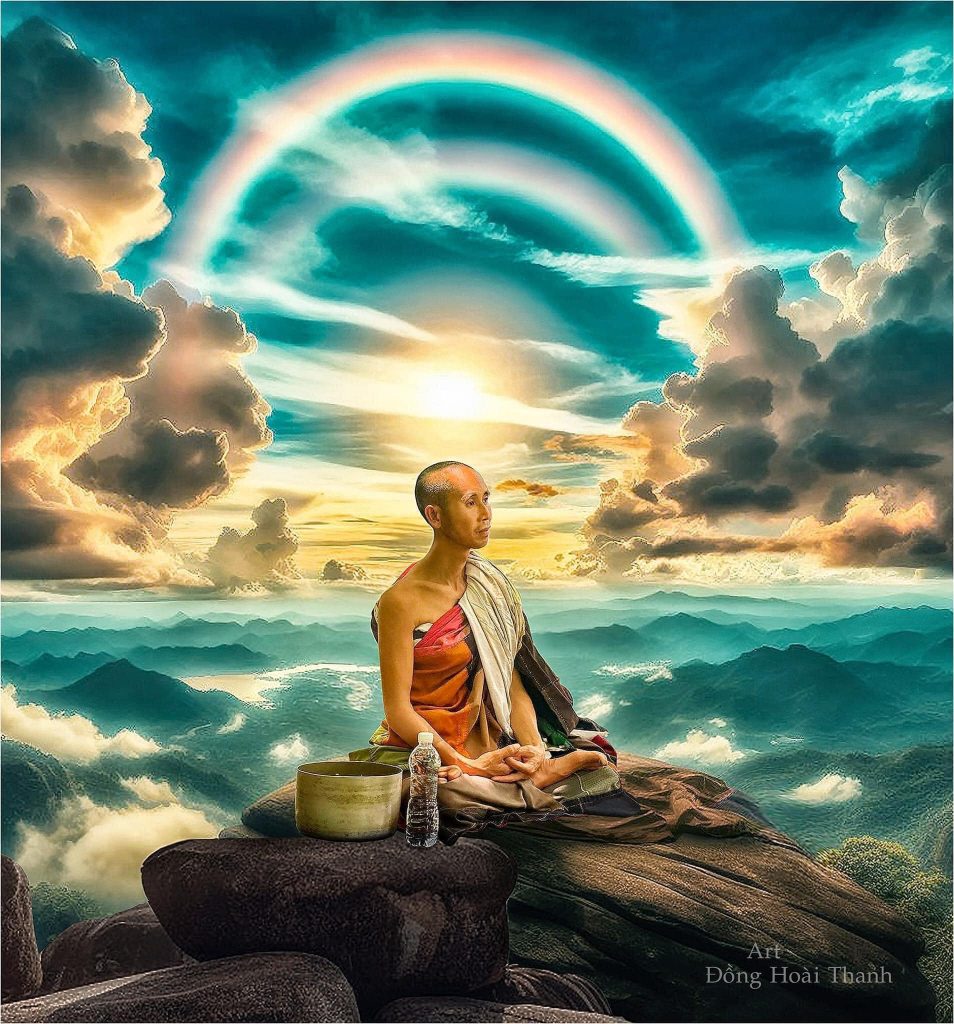
When asked, he said:
“The clothes I wear are sewn from cloth picked up from cemeteries or roadside trash cans. I don’t use robes of the same color as other monks, and I don’t claim to be from any temple, because I don’t want to misuse the image to offend monks and temples. People might say I am taking advantage to deceive or do wrong things, affecting them. The bowl to receive food is modified from a rice cooker someone gave me. That’s not the ‘bowl and robe’ of the venerable monks.”
Thich Minh Tue
These sincere words are highly appreciated by the Vietnamese people.
Based on my research, Vietnamese Buddhism is facing unprecedented division.
This arises from some monks exploiting the concepts of karma and reincarnation to distort and scare ignorant people with horrific visions of the next life. They then exploit offerings as a way to resolve karma, gain blessings, increase merit…
Blessings at this point are turned into a kind of spiritual currency that must be exchanged for real money, real wealth, including land and houses. They teach others to donate as much money as possible to the temple.
One monk even went so far as to teach that “those with a religious heart should donate their entire house to the temple… move elsewhere, just live in a simple hut.”
As a result, there are many images of Buddhist monks living in grand temples, with large statues, staying in air-conditioned rooms, traveling by luxury cars, and wearing luxury watches…
Therefore, when Monk Minh Tue appeared in patched robes, carrying a rice cooker inner pot begging for food once a day, sitting and sleeping in cemeteries, walking and walking, it ignited dissatisfaction among many Vietnamese people that had been smoldering for a long time.
Just as in a dark house, we cannot see anything, but as soon as a ray of light enters, immediately we see dust dancing madly.
Finally, it is unknown how long the Minh Tue phenomenon will last. But perhaps, the steps of this monk have ignited thoughts in the hearts of Vietnamese people about what a peaceful, free life is like, and especially, monk Minh Tue has become an inspiration for everyone to eliminate greed, anger, and delusion, towards an ethical life, harmonious and loving, which is something the modern world today is hard to hope for.
